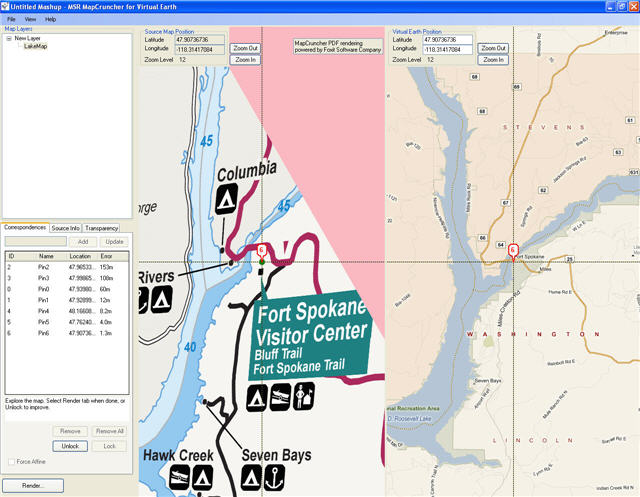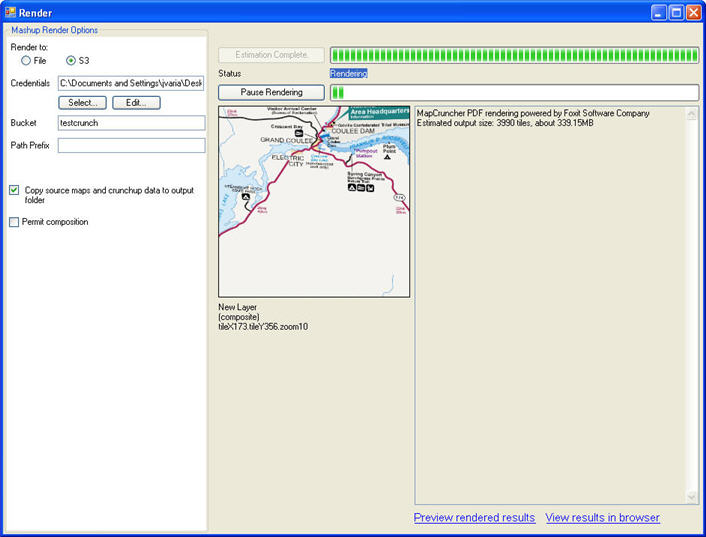AWS News Blog
Start Crunching – Create Mashups using MapCruncher and Render on S3
 Microsoft Research developed an innovative tool called MapCruncher for Microsoft Virtual Earth that takes any map-based image (JPG or PDF format) and overlays that image onto Microsoft Virtual Earth to generate requisite tiles. These tiles can then be used to display the map in Virtual Earth / Google Maps fashion (zoom in/out, pan, move etc). More info available here. Researchers recently added a new feature called “Render to S3”, so now all the tiles/images/javascript that gets generated off mapcruncher can be directly uploaded to Amazon S3 right from the tool and your mashup is instantly available to the world – right hot out of S3.
Microsoft Research developed an innovative tool called MapCruncher for Microsoft Virtual Earth that takes any map-based image (JPG or PDF format) and overlays that image onto Microsoft Virtual Earth to generate requisite tiles. These tiles can then be used to display the map in Virtual Earth / Google Maps fashion (zoom in/out, pan, move etc). More info available here. Researchers recently added a new feature called “Render to S3”, so now all the tiles/images/javascript that gets generated off mapcruncher can be directly uploaded to Amazon S3 right from the tool and your mashup is instantly available to the world – right hot out of S3.
Pretty neat!. So now you can not only create map-based mashups in minutes but also host them.
I could not wait to try this out. So I took the camping map from my last trip (Lake Rooselvelt and Grand Coulee Dam) and decided to crunch the NPS-published high-resolution map that shows all the campgrounds and boat launch information and overlay it on Microsoft Virtual Earth using the tool. Then I created 6 render points and let the mapcruncher algorithm do all the number crunching to figure out how may tiles I need, what tiles I need etc. I locked my images with Microsoft Virtual Earth and saved my mashup (lake.yum). It estimated that I would need 3990 tiles around 340MB of data. Now the best part, I clicked on radio button “Render to S3”, it asked me for my AWS credentials and boom! it started uploading all the images/tiles to S3 with just one click of a button. After a minute or so, I got a brand new mashup of Lake Roosevelt and Coulee Dam superimposed on Microsoft Virtual Earth and hosted on Amazon S3.
 Obviously, you can see that I am not a expert mapcruncher and the map got skewed to adjust with resolution. Part of the reason was that I only used 6 render points (minimum) instead of creating more for enchanced accuracy. The tool also has features to adjust transparency, which I did not get a chance to play with.
Obviously, you can see that I am not a expert mapcruncher and the map got skewed to adjust with resolution. Part of the reason was that I only used 6 render points (minimum) instead of creating more for enchanced accuracy. The tool also has features to adjust transparency, which I did not get a chance to play with.
However, the thing to note here is Microsoft Researchers were able to integrate highly-scalable storage infrastructure to their application – mashup in minutes – using the power of Web Services!
Next, I am going to create my neighborhood community mashup where I will overlay all occupant information on Virtual Earth so my neighbors can find other neighbors :)
Happy Crunching!
— Jinesh